Thesis
One of the primary responsibilities of law enforcement agencies is to solve and prevent crimes. From 2019 to 2022, there was a 50% increase in homicides in large US cities and a roughly 36% increase in aggravated assaults. To effectively solve crimes, investigators need context and information quickly. The reason the first 48 hours matter so much in solving a crime is that relevant context dissipates with every passing minute.
Law enforcement is often an early adopter of technology to enhance efficiency. Today’s patrol officers are typically equipped with radios and electronic control devices, particularly TASERs, as well as body cameras, dashboard cameras, and GPS tracking devices. Some patrol cars have built-in mobile automated license plate readers (ALPRs), and most officers use onboard laptops with computer-aided dispatch (CAD) and records management system (RMS) software for communication and data access. These technologies collect a large amount of data, but that data is often stored and managed by legacy systems, which are often out of date and fragmented.
Peregrine is a platform-as-a-service company that turns fragmentation into a cohesive system to extract insights that drive better policing and public safety. Peregrine integrates all of a law enforcement agency’s data, including body-worn camera footage, record management systems (RMS), computer-aided dispatch records, and more, into one platform. This allows law enforcement to search, find, and analyze previously unattainable information to make more strategic real-time decisions to power its operations, share information publicly, and promote accountability.
Founding Story
Peregrine was founded in 2018 by Nick Noone (CEO) and Ben Rudolph. Noone previously worked at government contractor Palantir, where he was the head of US Special Operations and spent years in the Middle East working with the US military, using disparate intelligence datasets to help identify ISIS members in Syria. In this role, he was responsible for creating the special operations community’s global real-time situational awareness platform, which was utilized by over 18K personnel across six continents as of 2023.
In 2018, Noone quit his exec job at Palantir and teamed up with Rudolph, a former technologist with the UN Refugee Agency and a fellow Stanford Men's Gymnastics alum. They set out to build Peregrine with the idea of bringing the tech Palantir used to find ISIS members to local police by combining various surveillance feeds and databases for more effective policing.
They began by reaching out to San Pablo Police Department Chief Brian Bubar in 2018 after reading about a case he worked on while an undercover officer and asking him about the challenges law enforcement was facing. As it turned out, Bubar’s department had recently seen rapid growth in the deployment of data-generating technologies like ALPR, bodycams, and situational awareness cameras, which created the need for data analysis software to make sense of it all. This initial conversation turned into an 18-month commitment to embed within the San Pablo PD’s investigations unit to build a platform that was responsive to its needs.
While embedded in the unit for two years, Noone and Rudolph built a real-time decision and operations management platform, which ultimately became Peregrine.
Product
Peregrine describes its product as a “real-time public safety and police data management platform” that helps public safety agencies and other organizations “integrate and activate their data for intelligence, analytics, and other enterprise use-cases.” The company builds back-end software to integrate and model data of any type or form, and front-end user-facing applications to help users explore and engage with their data. Its platform has a number of core functionalities.
Search
Public safety information like case reports, footage, dispatch information, etc., is often fragmented across systems like RMS, ALPR, CCTV, CAD, and numerous file rooms. Peregrine’s platform allows for a universal search across these disparate systems.
Search by Data Type
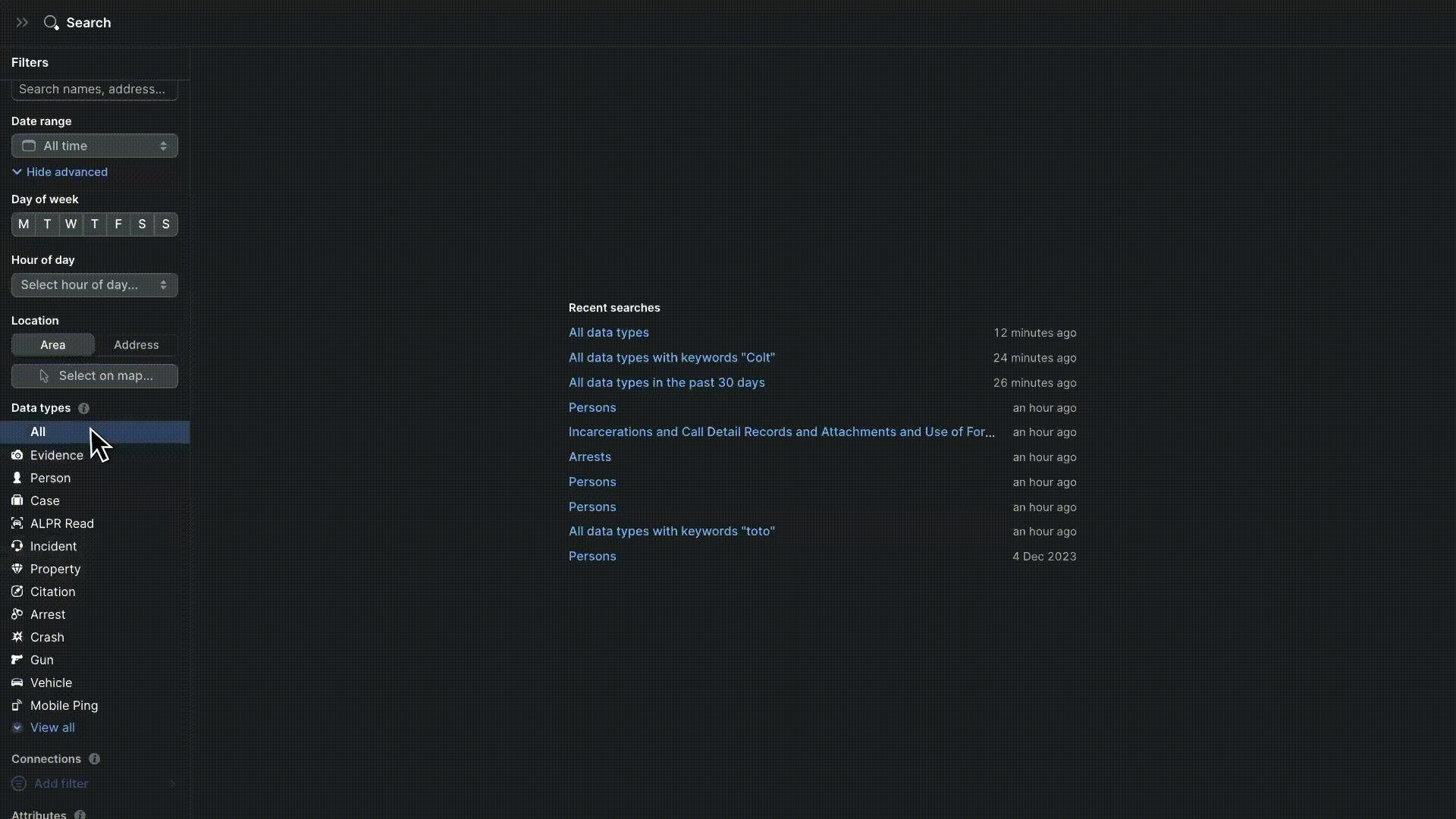
Source: Peregrine
Peregrine uses notional data to enable personnel to search by data type, whether that be a person, location, piece of evidence, case file, vehicle, firearm, citation, arrest information, NIBIN hit, ALPR scan, and more.
If running a search on a suspect’s license plate number, for example, Peregrine allows officers to type in the license plate number into an interface similar to a Google search bar. The system then generates a detailed profile of the vehicle based on various available data sources: license plate readers from different vendors and jurisdictions; records of possible arrests and citations; reports or field interviews associated with the vehicle.
According to a Modesto Police Department detective, this real-time search functionality can be valuable in helping patrol officers to make decisions about what side to approach a vehicle, whether a second officer needs to be on scene before an approach is made, etc.
Partial Search and Interagency Data Sharing
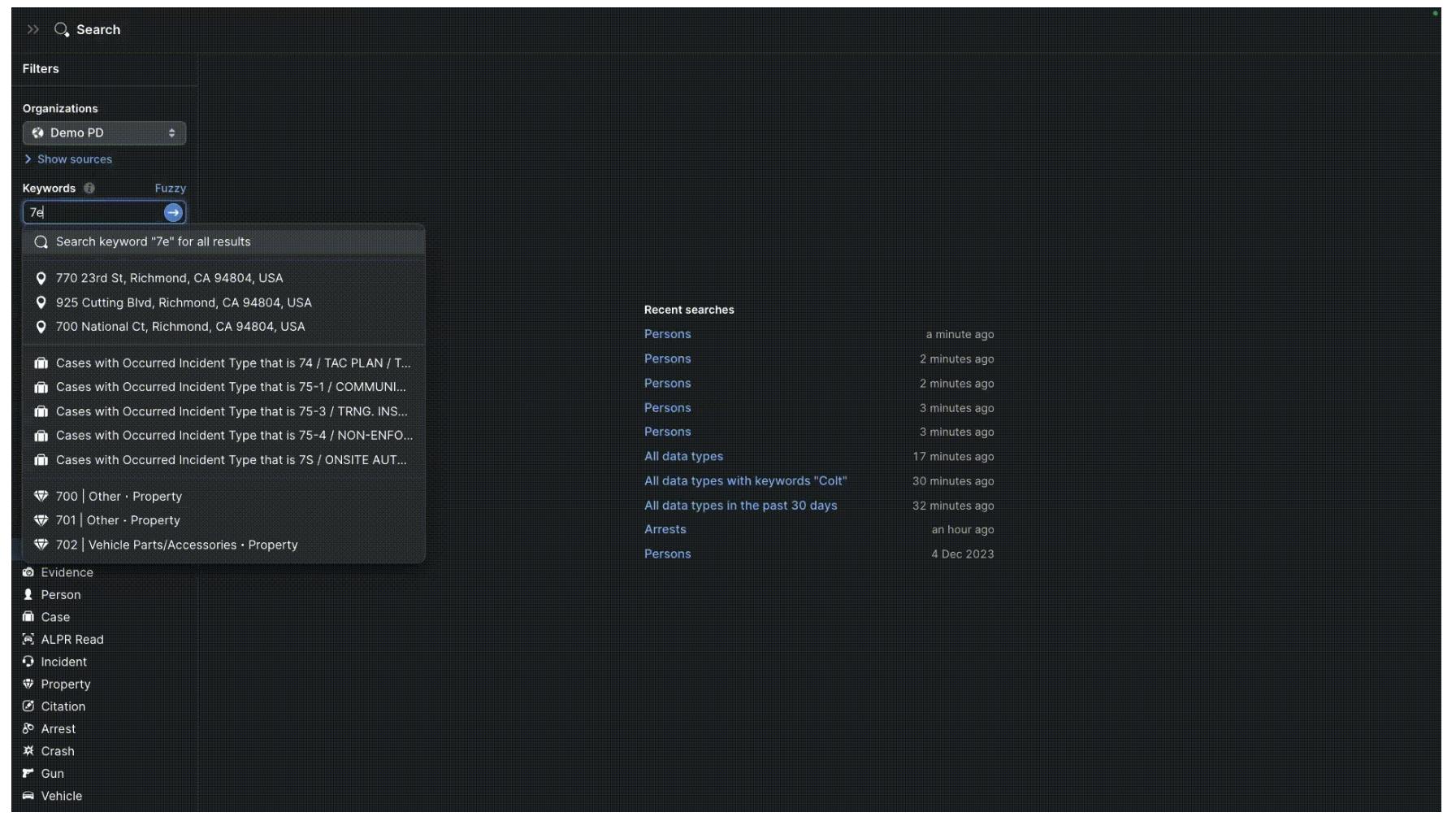
Source: Peregrine
With Peregrine’s search feature, officers can search by partial phrases and see relevant data points across all organizations sharing data. Searches will automatically flag pertinent information across data for names, addresses, vehicles, prior arrests, and more.
Advanced Filtering
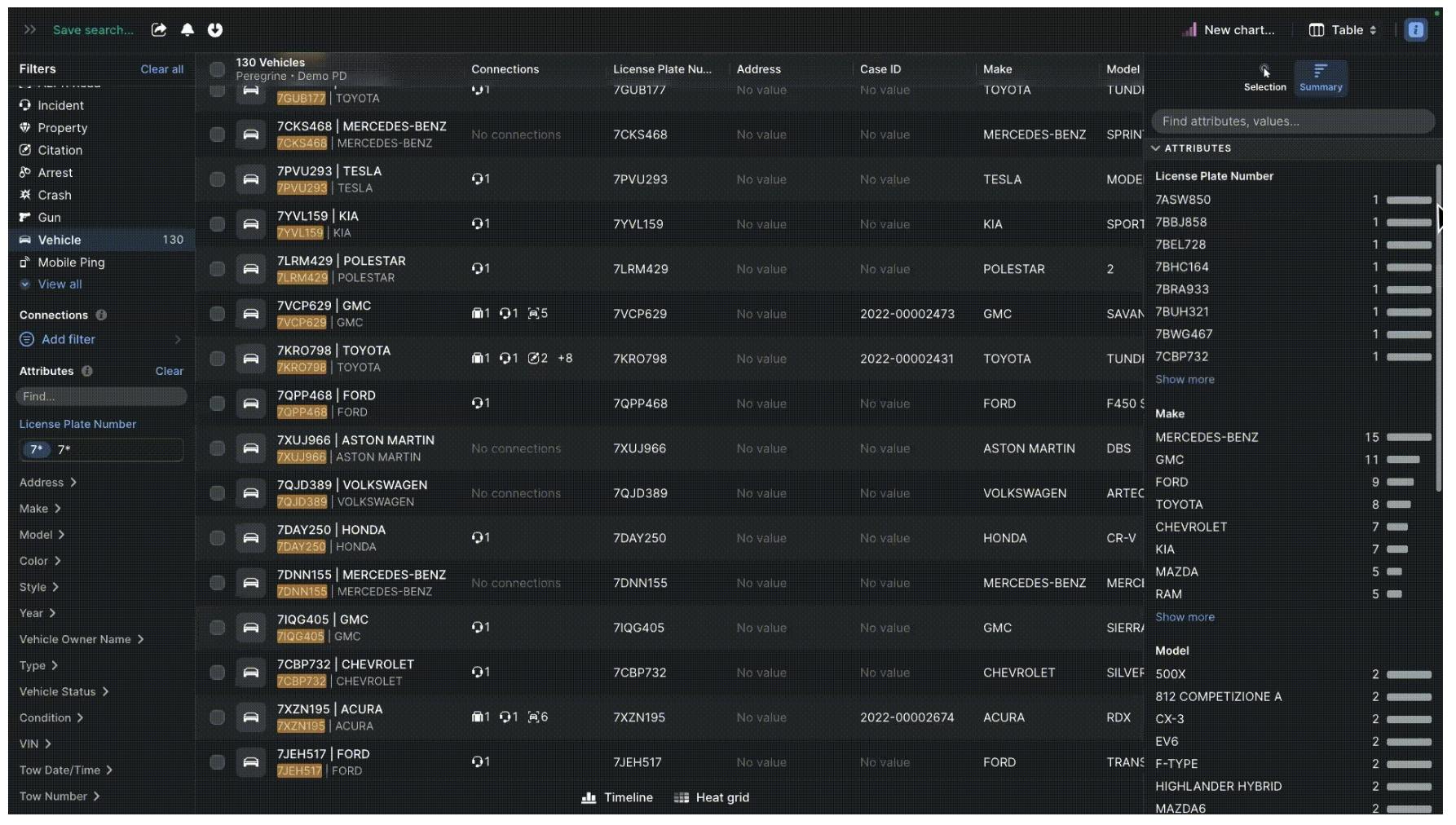
Source: Peregrine
With advanced filters in Peregrine’s search functionality, any authorized user can find information across disparate systems, on desktop or mobile, in seconds. The system can filter by incident, property, citation, crash, arrest, gun model, IP address, and more.
For a law enforcement agency, this tool means that instead of searching several dozen different databases, employees can now use one single search bar and sign on to receive results gathered from multiple databases. This not only saves time, but it also gives officers information in a simplified format that they may have missed otherwise.
Map
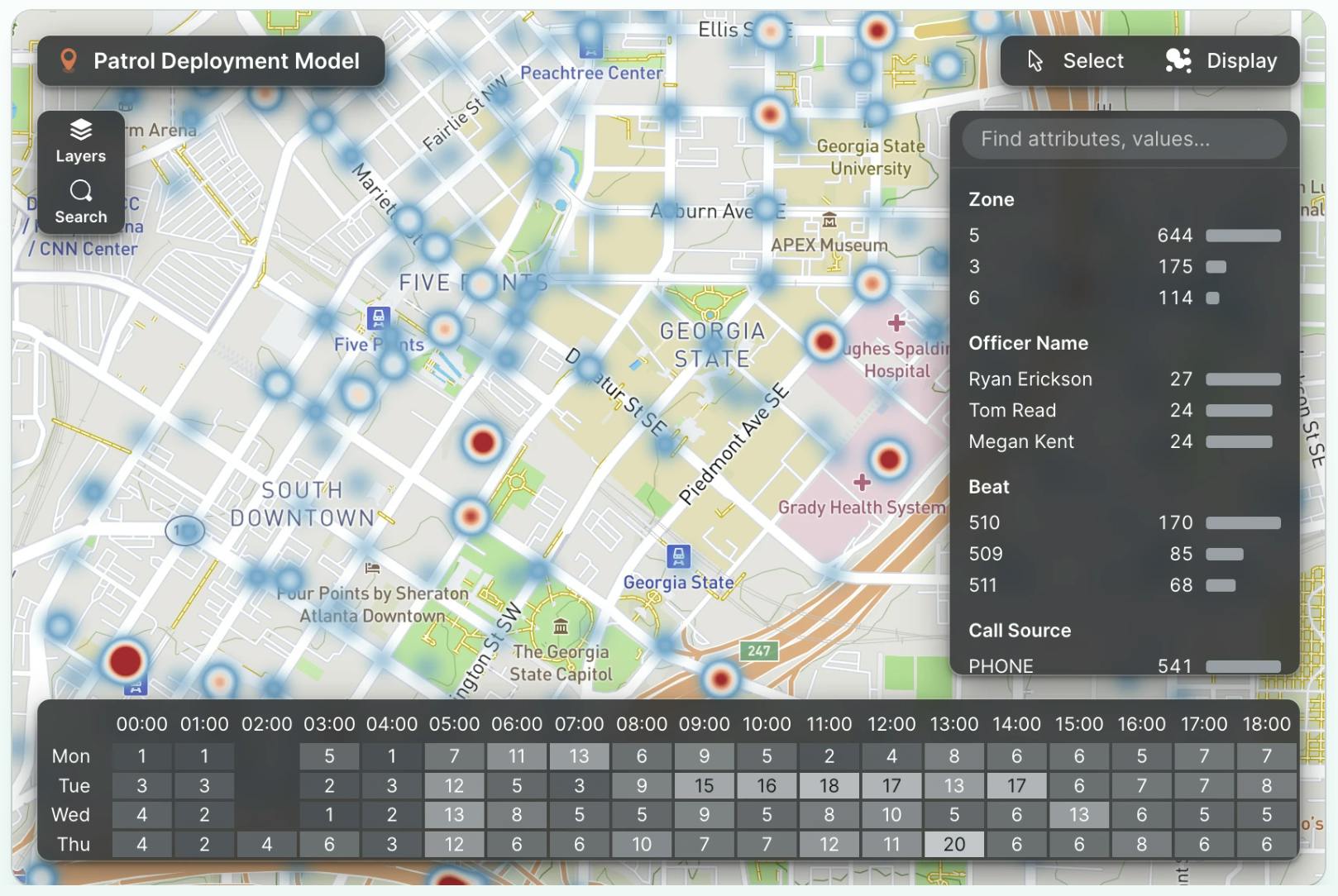
Source: Peregrine
Peregrine’s Map application allows organizations to interact with the entirety of their data in a unified, real-time geospatial context. The aim of the feature is to “simplify everyday workflows and unlock sophisticated spatial analysis capabilities”.
Network
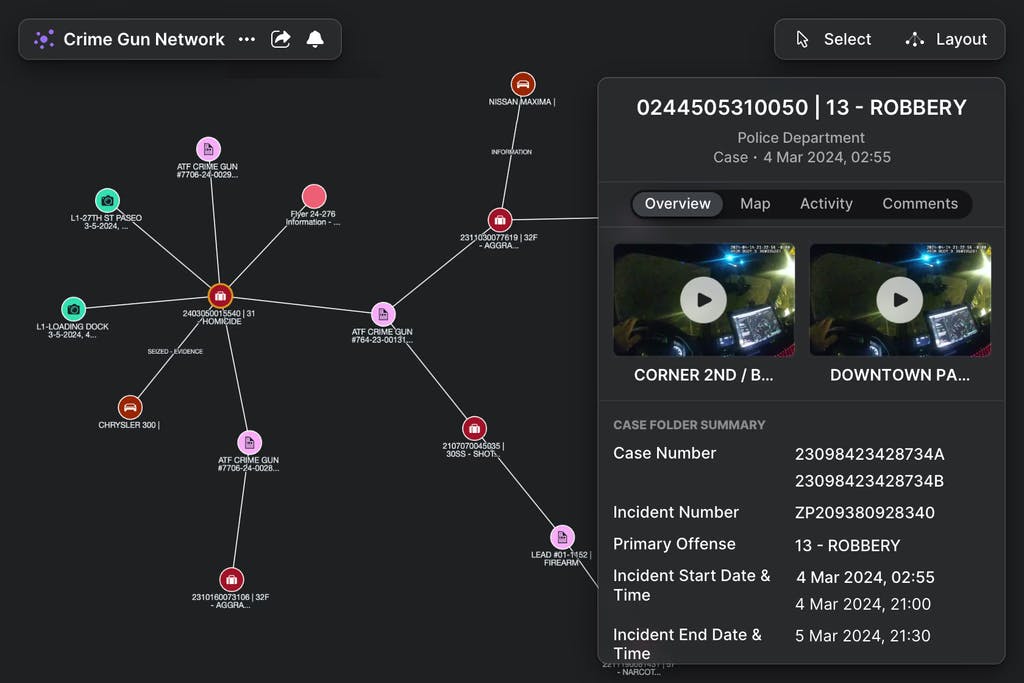
Source: Peregrine
Peregrine’s Network tool allows users to represent data in a network graph with the goal of surfacing “deep links between people, places, events” and revealing “hidden connections and insightful context about the relationship between entities.”
Table
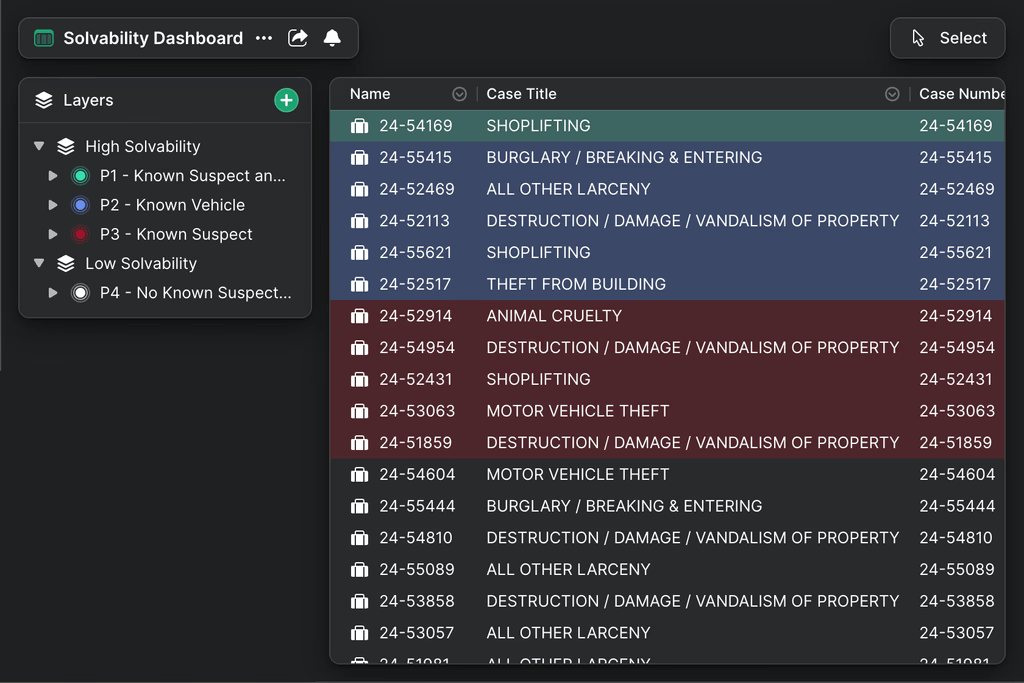
Source: Peregrine
The Peregine platform’s Table feature enables users to explore and analyze structured data through an easy-to-use spreadsheet interface that pulls information in real-time from various integrated data sources.
Chart
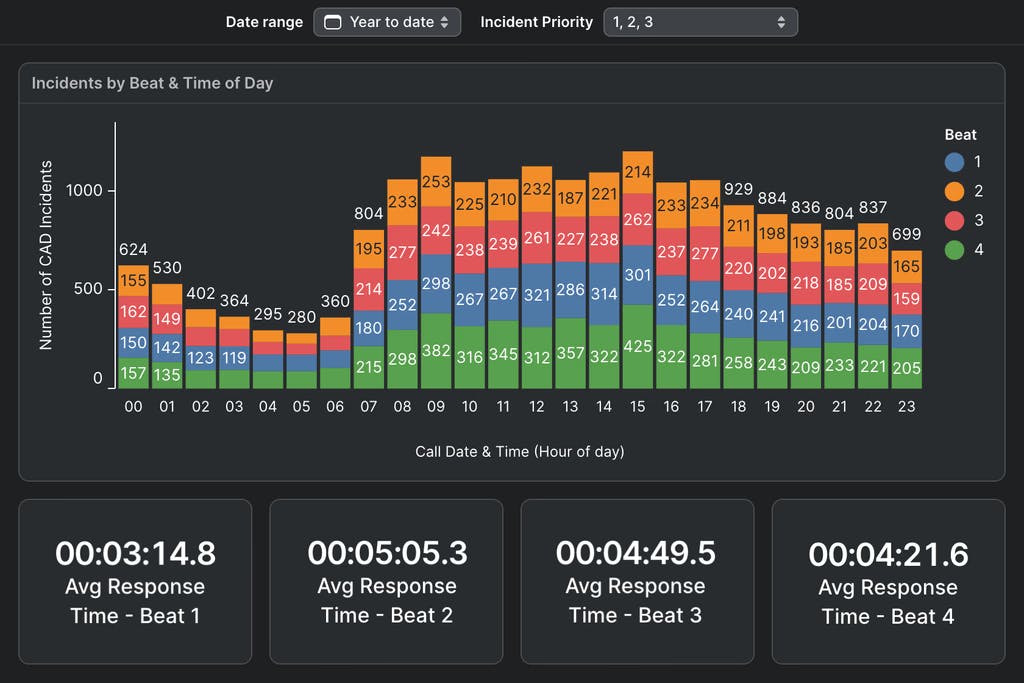
Source: Peregrine
With Peregrine's Chart feature, users can create data visualizations that transform complex information into clear, actionable insights through interactive reporting tools that draw from continuously updated data sources.
Dashboard
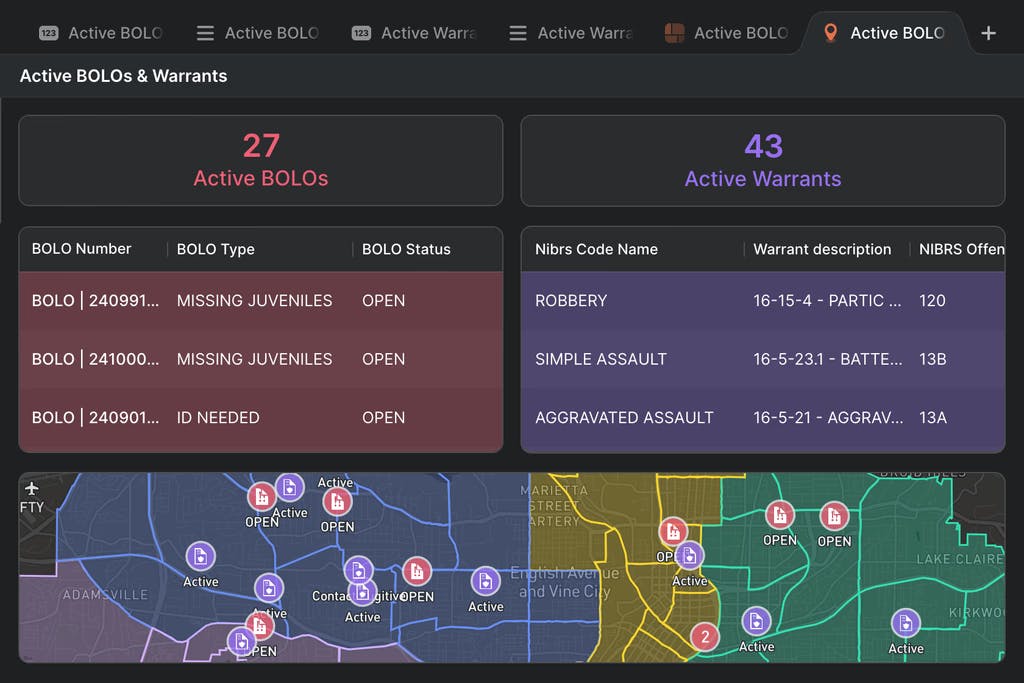
Source: Peregrine
Peregrine’s Dashboard application lets organizations bring together maps, networks, charts, tables, and dossiers into a single live interface, enabling interactive visualization and real-time data analysis.
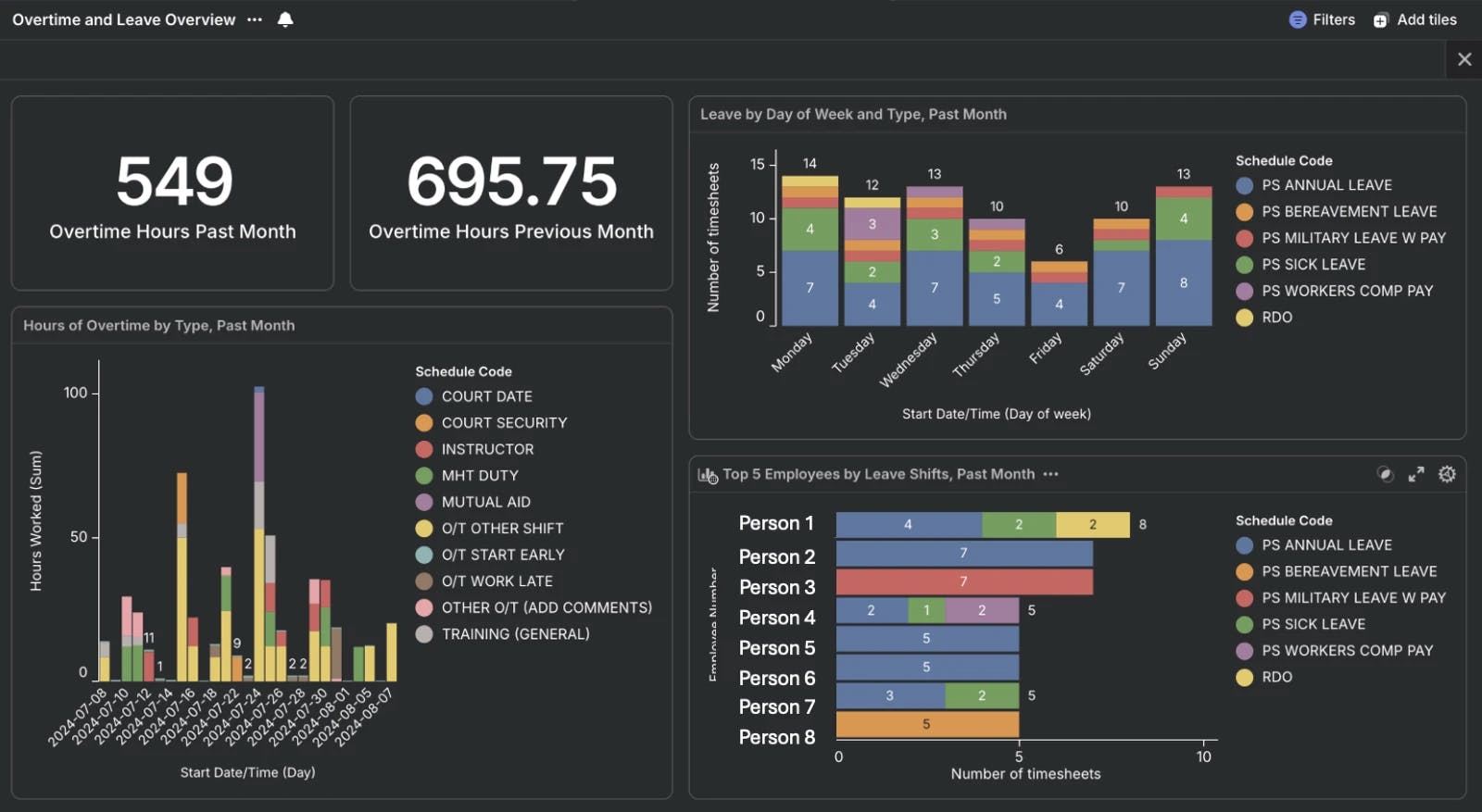
Source: Peregrine
There are a variety of use cases for Peregrine’s platform dashboard. For example, Captain John Reynolds, from the Livermore Police Department, uses Peregrine to analyze shift patterns, consider exposure to traumatic incidents, and assess workload.
Alert
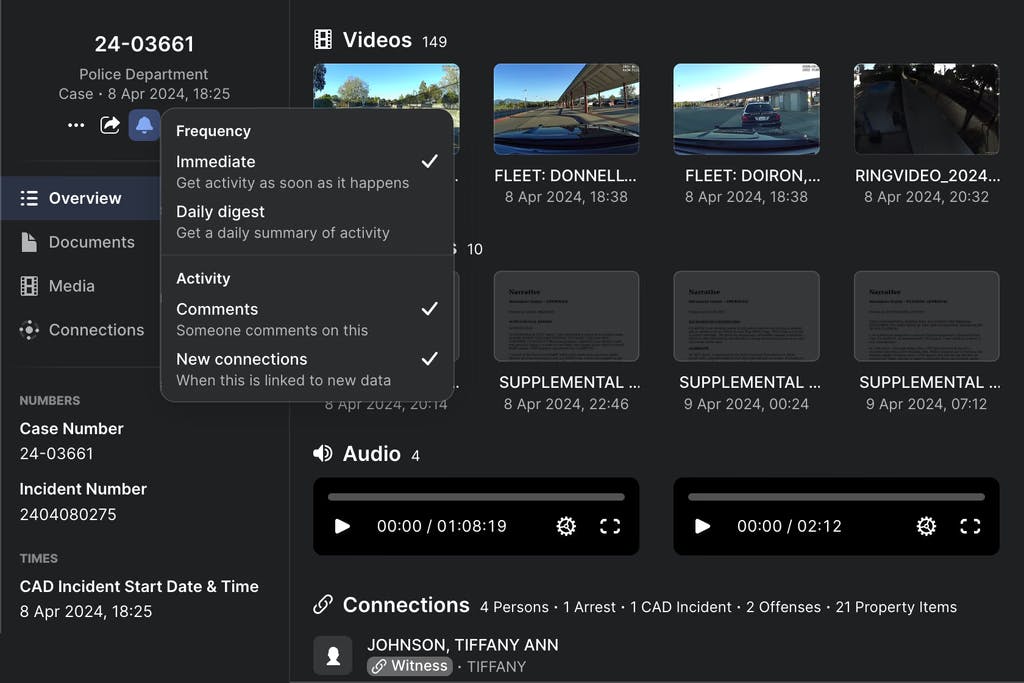
Source: Peregrine
Peregrine’s Alert tool enables organizations to set up mission-focused notifications for individuals, teams, or whole departments, helping them pinpoint specific activities and track emerging trends in real time.
Workspace
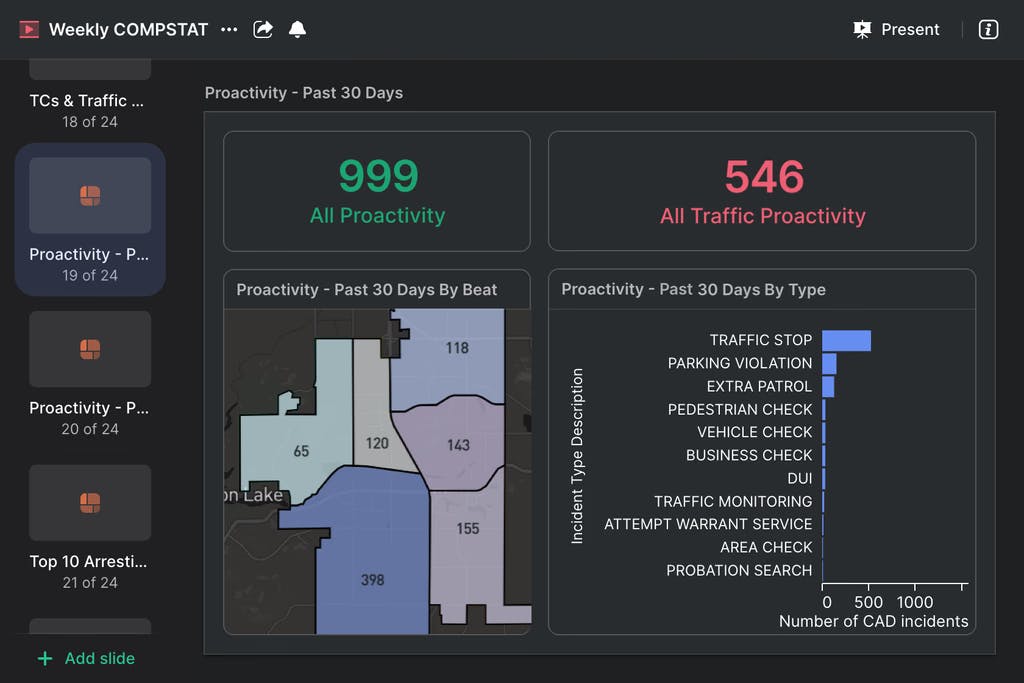
Source: Peregrine
Peregrine’s Workspace application lets organizations bring together searches, maps, networks, tables, alerts, and full analytical projects in a shared management environment designed to keep teams organized and aligned.
Market
Customer
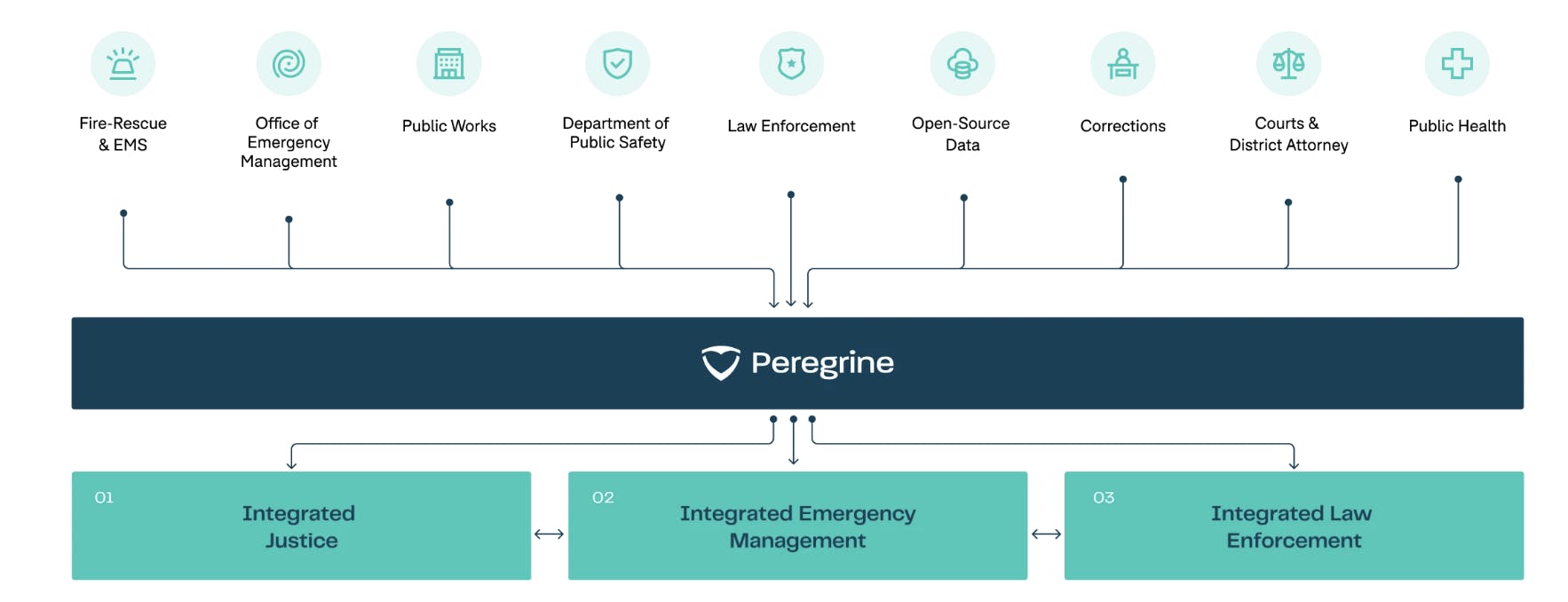
Source: Peregrine
Peregrine primarily targets government organizations and public safety agencies as customers, who use it for crime reduction, disaster management, fraud detection, health service delivery, and more. As of August 2025, it offers solutions for law enforcement, emergency management, 911, and fire rescue.
As of August 2025, the company says its customers serve 80 million Americans, with its software having been deployed at police departments nationwide, such as Atlanta PD, Livermore PD, Menifee PD, and more. In August 2025, the company also announced it had officially launched in Canada, partnering with Peel Regional Police. At the time of this announcement, Peregrine expressed that it intends to expand across Canada, and that it was already being used in “hundreds of jurisdictions” across the United States.
Market Size
The global public safety software market was valued at $7.1 billion in 2024 and is expected to grow to $9.7 billion by 2029, growing at a CAGR of 6.5%. Meanwhile, the law enforcement software market, covering CAD, RMS, RTCC command software, and crime analytics, was worth $15.7 billion in 2023 and was expected to grow at a CAGR of 11.3% to reach $31.4 billion by 2030.
Structural drivers of growth include rising violent‑crime pressure, body‑camera mandates, and federal tech‑modernization grants, keeping budgets expanding even when overall municipal spending is tight. There are tech tailwinds present with cloud adoption, 5G edge video, and generative‑AI analysis of multi‑modal data, pushing per‑officer software spend higher each year.
Peregrine’s addressable market is large but fragmented. In the United States, there were ~18K state and local agencies (67% city PDs, 17% sheriffs, 16% other) as of 2018 and over 750K law enforcement officers.
Competition
Flock Safety: Atlanta‑based Flock Safety was founded in 2017 to build AI‑enabled license‑plate and video cameras that feed investigators real‑time vehicle intel. In March 2025, it raised $275 million in a Series F led by Andreessen Horowitz at a valuation of $7.5 billion. Its total funding raised as of August 2025 was $655.6 million, with backers including a16z, Bedrock, Greenoaks, and Matrix.
Flock Safety focuses narrowly on automated license plate recognition, deploying solar-powered, LTE-connected cameras that capture high-quality plate data and feed into a nationwide network used by over 5K law enforcement agencies as of August 2025. In contrast, Peregrine’s platform integrates a much broader set of data sources, including dispatch, records, video, sensors, and alerts, into a unified interface for real-time situational awareness and investigation. While Flock excels at vehicle identification and data-sharing scale, Peregrine positions itself as a more comprehensive operating system for public safety operations.
ForceMetrics: ForceMetrics, founded in 2020, is a decision-assist platform for first responders that provides real-time intelligence during 911 interactions. It raised a $22 million Series A in October 2024, led by Costanoa Ventures, bringing the company’s total funding to $29.4 million as of August 2025.
ForceMetrics’s Velocity platform operates as a precision policing search engine, overlaying real‑time context such as prior incidents, mental‑health flags, and safety risks across CAD, RMS, and behavioral data to empower officers with actionable insights at the point of contact. While Peregrine also unifies diverse public-safety data into one interface, its strength lies more in broad ecosystem orchestration and multimodal integration rather than the granular, real-time decision-assist features that define ForceMetrics.
Mark43: Mark43 was founded in 2012 by Harvard classmates. Mark43 provides a cloud‑native records‑management and computer‑aided‑dispatch (CAD) suite. It raised a $55 million fundraising round in March 2024 led by General Catalyst, and has raised a total of $268.8 million in funding as of August 2025. Like Peregrine, Mark43 stresses cloud deployment and modern UI. A key difference is that it sells point solutions (CAD/RMS) rather than an integrated analytics environment, so agencies still stitch tools together.
Business Model
Peregrine sells its platform to public safety agencies via recurring licenses. For example, in January 2023, the Anaheim Police Department signed a customer order form to pay Peregrine a $300K service fee annually through 2027. Peregrine says it deploys its software and onboards new customers in 12 weeks or less and can tailor to agency-specific workflows.
Traction
As of August 2024, Peregrine had 57 contracts with a variety of public safety agencies across the US. Its revenue more than tripled from $3 million to $10 million in 2023, and CEO Nick Noone said in August 2024 that he expected it to triple again to $30 million in 2024. Customers of Peregrine served 80 million Americans as of 2025.
According to the company, clients such as the Albuquerque Police Department reported a 40% decrease in homicide cases using Peregrine, while the Atlanta Police Department reported a 21% reduction in violent crime. The company said it aimed to double its workforce to 350 employees by the end of 2025 following a March 2025 Series C, and it expanded to Canada from the US in August 2025.
Valuation
In March 2025, Peregrine raised a $190 million Series C led by Sequoia at a $2.5 billion valuation, less than a year after raising a $30 million Series B in May 2024 led by Friends & Family Capital. The company’s total funding was $250.1 million following its Series C. Other notable investors in Peregrine include Craft Ventures, O.G. Venture Partners, Godfrey Capital, Fifth Down Capital, and Goldcrest Capital.
Key Opportunities
Law Enforcement Software Modernization
The law enforcement software market, covering CAD, RMS, RTCC command software, and crime analytics, was worth $15.7 billion in 2023 and was expected to grow at a CAGR of 11.3% to reach $31.4 billion by 2030. Meanwhile, adoption of real‑time crime centers (RTCCs) had leapt 148 % in four years as of 2024, yet still reaches <1 % of U.S. agencies. Peregrine can benefit from these market tailwinds as it continues to expand its customer base across the US and Canada.
Expansion into Emergency Management and Public Safety
Beyond traditional law enforcement, there's a growing demand for integrated data solutions in broader public safety and emergency management sectors. Cities from Scottsdale to Cobb County tout RTCCs as the “central nervous system” for large events and daily response. Similarly, FEMA is pouring $319 million (EMPG) plus $103 million (EOC grants) in FY 2024 into interoperable emergency‑operations tech.
Peregrine has already proven events like the Super Bowl as use cases for its platform. In Super Bowl LIX, New Orleans police, Homeland Security, and federal partners used Peregrine for a unified operating picture across body‑cams, CAD, location, and suspicious‑activity feeds. This represents a key opportunity because Peregrine can replicate the Super Bowl playbook for marathons, festivals, disaster response, and cross‑state mutual‑aid, and lock in multi‑agency network effects.
Key Risks
Technological Risks
Peregrine's platform relies on integrating various data sources to provide actionable insights. However, the use of AI in law enforcement has raised concerns about the accuracy and reliability of such systems. For instance, AI tools can sometimes produce hallucinations, generating false or misleading information, which can have serious legal and ethical implications in public safety contexts.
The field of public safety technology is rapidly evolving, with new tools and platforms emerging regularly. There's a risk that Peregrine's current technologies could become obsolete if they don't keep pace with advancements or fail to integrate newer, more effective solutions. Moreover, the lack of standardized policies governing AI use in law enforcement can lead to inconsistent adoption and potential misuse.
Consumer-Side Risks
The integration of AI and data analytics in public safety raises significant privacy concerns among citizens. The potential for misuse of personal data or biased decision-making can erode public trust. For example, the use of facial recognition technologies has been met with criticism over issues of racial profiling and unauthorized surveillance.
Law enforcement agencies may also be hesitant to adopt new technologies due to budget constraints, lack of technical expertise, or skepticism about effectiveness. This resistance can slow down Peregrine's market penetration and limit the scalability of its solutions.
Summary
Peregrine is a platform-as-a-service company that unifies fragmented law enforcement data—ranging from body-camera footage to dispatch records into a single, real-time system for search, analysis, and decision-making. Founded in 2018 by former Palantir executive Nick Noone and technologist Ben Rudolph, the company built its platform while embedded within the San Pablo Police Department, ensuring close alignment with frontline needs. As of August 2025, Peregrine serves agencies covering more than 80 million Americans, offering tools for crime reduction, emergency management, and public safety. With $250 million in funding and a $2.5 billion valuation as of 2025, the company is positioned to capitalize on growing demand for modernized law enforcement software, though it faces technological, privacy, and adoption risks.



